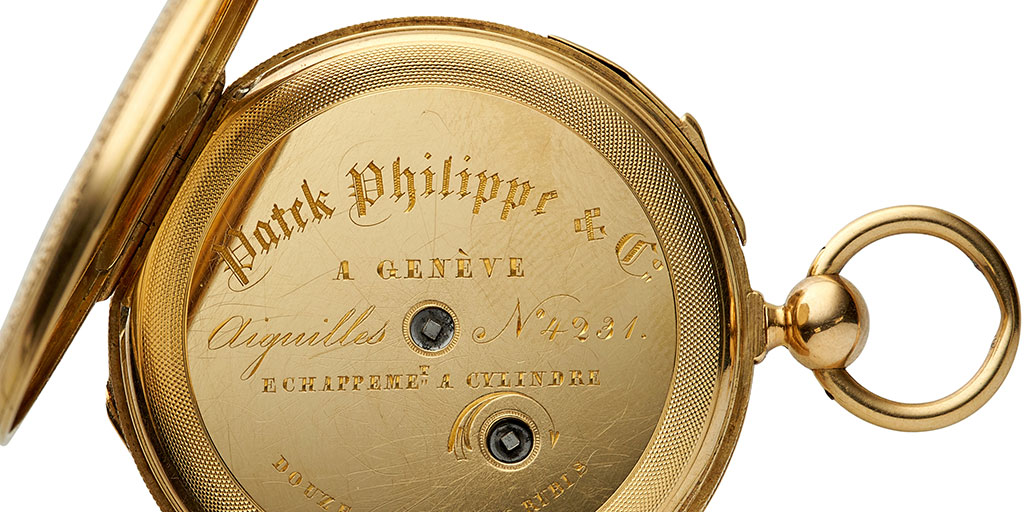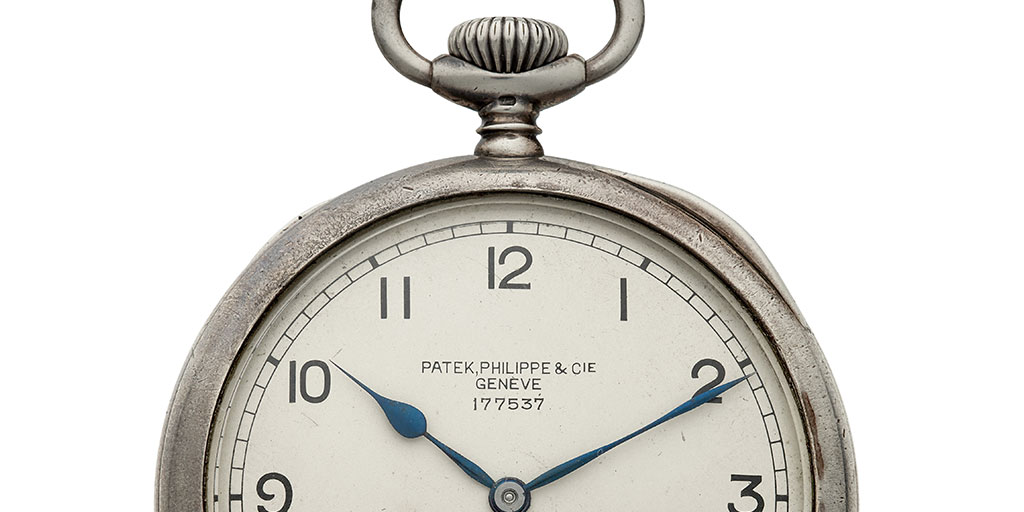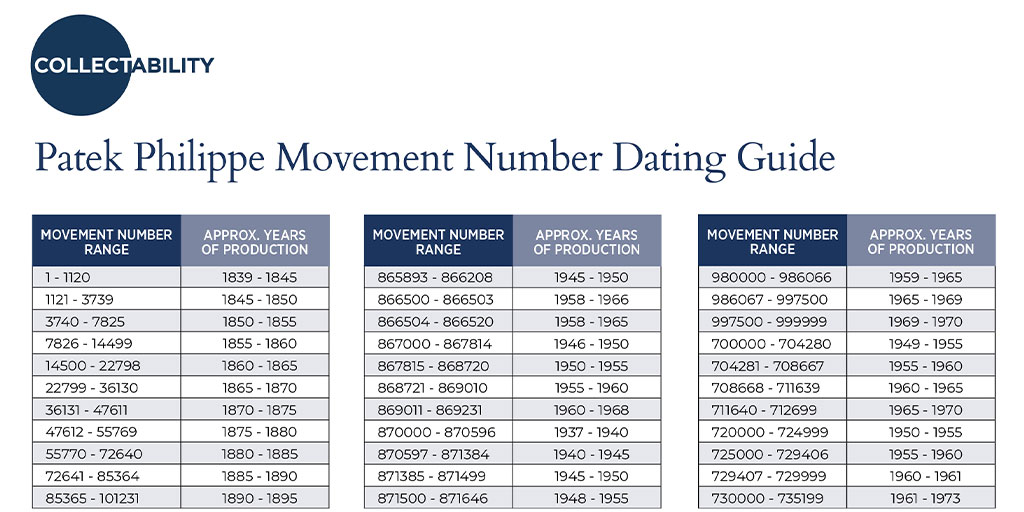Have you ever wondered when a Patek Philippe watch you are interested in was made, even if it does not have the original Certificate of Origin or Extract from the Archives? If you can locate the movement number, it’s relatively easy to get an approximate date of production by using Collectability’s Patek Philippe Movement Number Dating Guide.
Patek Philippe is unique in that every timepiece it has ever made since the start of the company in 1839, has been allocated its own, individual movement number with the date of production for each one meticulously recorded in the Archives. This information is included in the original Certificate of Origin, or, if this has been lost, an Extract from the Archives. If you’re lucky enough to have either of these documents from Patek Philippe, you’ll know exactly when your watch was made. If not, Collectability’s Dating Guide will help you identify a date range of when your watch was made.

If we go back in time, it is possible to identify when a Patek Philippe was made by cross referencing the first three digits of the movement number with the production block movement series numbers and date range that it was part of. When the company was founded in 1839, the first movement produced literally started with the number 1. Between 1839 and 1845, movements 1 – 1120 were produced. As we move through the 19th century, movement numbers reach 111801 – 124475 between the years 1900 and 1905. At this time, it’s safe to say that Patek Philippe made around 100,000 watches within its first 60 years of production.

By 1920 to 1925 Patek Philippe slowly ramps up production and reaches movement numbers 193781 – 202195. It’s important to note, that although the numbers appear to increase relatively quickly over the decades to the current seven million series block that we are in today, Collectability estimates that only around two million timepieces have been made since Patek Philippe started in 1839. There are plenty of gaps of unused number sequences not assigned to movements which can make dating a movement number quite confusing. Add to the mix that blocks of numbers were occasionally resurrected from the past, and there are plenty of exceptions to the rule. However, with Collectability’s Dating Guide, you are going to know with relative certainty when your Patek Philippe watch was made.

By 1960, we see the movement numbers break the one million mark and numbers begin to follow a predictable pattern through the 1960s t0 1990s. However, things start to change in 1995 with the introduction of the Caliber 315 and the movement number block jumps to the three million series. The three million number block series continues until 2009 when a new jump to the five million block of numbers starts. This is when things get interesting. Patek Philippe starts to mix and match numbers so that people could no longer guess the year of production (unless of course you have the original documentation). This is because, if you’re buying a watch, you don’t want to think that your watch’s movement is old inventory. However, movements are made in batches and not all are cased at the same time, so it is possible to think you have an ‘old’ movement in a new watch, when it’s simply a matter of when it was cased. The year 2009 is also interesting because it was when the Patek Philippe Seal was introduced, replacing the Geneva Seal. Therefore, if your movement number starts with a five in the five million block range, you can be quite certain that the movement is stamped with a PP Seal which is a handy reference point when dating your watch. In 2015, the seven million movement number block started so any new watch purchased from an Authorized Patek Philippe Dealer today should start with the number seven.
Currently, you cannot go online and find all the movement dating information we present in the Collectability Dating Guide. The sources for all our information came from books, most notably, the Huber and Banbery series of books on Patek Philippe pocket watches and wristwatches. The two books list movement numbers and their production ranges from 1839 – 1971. More recently, the Patek Philippe Authorized Biography by Nicholas Foulkes has a very useful caliber-based dating system chart in the back of the book. In addition, The Blue Book series by Tortella & Sons is an excellent resource for dating your watch. We combined this published information with John Reardon’s own data base that he has been building for many years to produce the most definitive Dating Guide we are aware of.
As previously stressed, there are exceptions to the Patek Philippe movement numbers and their associated date of production. However, our Dating Guide will help you approximate when your Patek Philippe was made — and we hope you have fun working out production dates — there can be plenty of surprises! Ultimately, it is important to note that only a Certificate of Origin or Extract from the Archives can definitively date your watch.
For a more information, please watch this video in which John Reardon’s explains Patek Philippe’s movement numbers and their associated production dates.
To receive a free copy of Collectability’s Patek Philippe Movement Number Dating Guide please email here.



